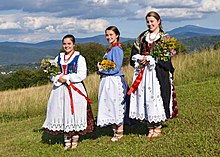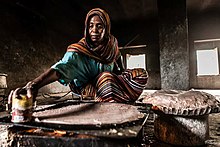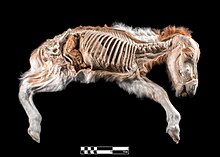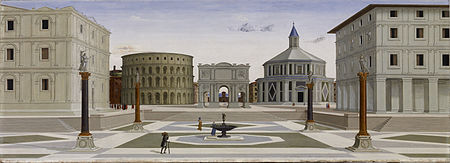GLAM/Coleções digitais
Galleries • Libraries • Archives • Museums
Começar • Projetos modelo e Estudos de Caso • Avaliação de Projetos • Fale Conosco
Para a comunidade GLAM-Wiki: Conecte-se • Discussão • Calendário • Boletim informativo • Recursos • Voluntários • Outras páginas
Digitalização colaborativa

A comunidade Wikimedia, responsável por construir, liderar e desenvolver projetos como a Wikipédia e o Wikimedia Commons, tem como objetivo final tornar a soma de todo o conhecimento humano livremente acessível a todas as pessoas do mundo.
GLAMs (Galerias, Bibliotecas, Arquivos e Museus) estão na vanguarda da interpretação de informações sobre herança cultural direcionada ao público, ao passo que as comunidades da Wikimedia distribuem esse conteúdo ao mundo; afinal, a Wikipédia possui quase 5 mil visualizações por segundo! Integrar na Wikipédia materiais raros ou de difícil acesso sobre herança cultural, bem como em outros projetos da Wikimedia, como o Wikimedia Commons e o Wikisource, permite expô-los a uma audiência global, muito mais ampla. Dessa forma, chamamos atenção à expertise e às coleções de organizações ao redor do mundo.
As comunidades da Wikimedia são capazes de se apresentarem como poderosas aliadas na construção de um repositório de digitalização e compartilhamento da herança cultural. Especialmente em partes do mundo onde os recursos e as habilidades relacionadas a projetos de digitalização são escarços, as comunidades da Wikimedia reunem um know-how global direcionado ao fortalecimento de projetos para que tenham um maior alcance.
Como as comunidades da Wikimedia podem ajudar com a digitalização?
Though our community and affiliates will very rarely be in a situation where they should be the principal digitization labor, our community excels at helping refine skills, processes, tools and strategies that encourage open and public access to these materials.
The only caveat: Wikimedia communities can only take digital copies of the cultural heritage material under a free license – typically Public Domain or CC BY-SA. These free licenses are an important part of bringing that knowledge to the public, and creating an institutional policy to allow such licenses may be part of a collaboration. (To learn more, we recommend this booklet).
Em parceria com GLAMs, as comunidades da Wikimedia são capazes de:
- Empenhar fotografos para que fotografem objetos e eventos culturais;
- Auxiliar com escaneamentos e projetos de digitalização “caseiros” (DIY);
- Ajudar a refinar a qualidade da informação atrelada aos objetos digitais através de transcrição ou de enriquecimento dos metadados; e
- Colocar mídias em frente a uma ampla audiência nos projetos da Wikimedia.
Observe que cada projeto é diferente, e que as comunidades da Wikimedia são compostas por voluntários. Por isso, quaisquer projetos são dependentes da capacidade das comunidades locais. Para saber mais sobre a sua comunidade local de voluntários, entre em contato com a sua Afiliada da Wikimedia local ou com qualquer voluntário do projeto GLAM-Wiki em sua região.
Documentando objetos tridimensionais
One of the most successful and widespread strategies among Wikimedia communities has been photographic efforts from volunteers. The Wiki Loves Monuments and Wiki Loves Earth campaigns frequently work to find and document heritage sites that have been identified by expert communities for competitions.
O ato de trabalhar para identificar, documentar e integrar conhecimento sobre determinados tipos de herança aos projetos da Wikimedia oferece uma forma de escalar um esforço muitas vezes desafiador e custoso, quando feito por profissionais. Além disso, os projetos da Wikimedia apresentam-se como um dos melhores lugares para garantir a continuidade dessa documentação: diferente do Flickr e outros websites de armazenamento de fotografia comercial, o Commons integra esse mesmo conteúdo em outros contextos de conhecimento (como a Wikipédia, o Wikidata e outros projetos da Wikimedia), aumentando as chances de potenciais usuários encontrarem as coleções.
Scalability: Highly scalable: amateur photography is a popular hobby around the world; increasingly commons devices like smartphones and tablets provide for decent quality photos, so more people are able to participate.
Challenges: Amateur photographers produce variable quality of images; competitions require judging; uploading to Commons with high quality metadata can be challenging – establishing a strong workflow for ensuring that the images are useful following their upload is important; some legal environments are not conducive for this kind of photography, for example some parts of Europe do not have full "Freedom of Panorama".
Potential allies: Heritage organizations, especially those that control heritage site listings; museums or other owners of 3D objects; photography communities and clubs.
Evaluation strategies: Evaluating Volunteer Photograph and Evaluating Wiki Loves Events
Case study: Wiki Loves Art

Sometimes art galleries, especially smaller ones, do not have the capacity to create digital records of their sculptures and other types of physical objects. Wikimedia Belgium created a rather innovative solution: Wiki Loves Art.
Through the Wiki Loves Art campaigns, WMBE partnered with cultural heritage institutions around the country to create photo scavenger hunts throughout their collections (with the guidance and support of curators, of course). Public domain works, or works whose rights were owned by the institution, were photographed and made available for use in Wikimedia projects. Now the items within the institutional collections offer the public illustration for a number of different topics on Wikipedia, and high-quality digital representations of the institution's works are readily available.
See the campaign page on Wikimedia Belgium's Wiki
Case study: Philippines Cultural Heritage

As an example of heritage documentation projects that adopt the annually run Wiki Loves Monuments campaign, Wikimedia Philippines hosted a Philippines Cultural Heritage Project to document buildings. Following the widespread damage and destruction of cultural heritage structures in 2013 due to natural disasters, the local Wikimedia community partnered with the heritage community in the Philippines to train and organize volunteers to photograph and upload information about heritage sites throughout the country.
See the documentation on WMPH's wiki
For further information about logistics, see the grant report.
Case study: Wiki From Above
Wikimedia South Africa approached documenting natural and heritage sites from a new angle, literally. Teaming up with groups of drone aviation enthusiasts around the world, WMZA hosted a competition for drone operators to photograph and video heritage sites from above. The competition solicited hundreds of submissions, strengthening the visual documentation of a number of different sites.
See the grant report and the campaign page
Documenting living traditions
GLAMs and other cultural organizations host performances and gatherings which celebrate intangible cultural heritage. These events and activities preserve rich cultural practices and, as UNESCO describes it, these are very "fragile" parts of our cultures. Wikimedia communities seek to document these living traditions, to help preserve them for the world .
Wikimedia communities are excellent partners in documenting these events, and providing clear and ready ways to reuse the documentation: living traditions are hard to document, so having easy to use documentation is important. Preserving record of living on Wikimedia projects not only creates that record but brings that tradition to the world.
Scalability: Like Citizen Science, there are likely interested volunteer, advocacy or historical communities that can be cross trained in participation; scaling through "Wiki Loves" type events allows for competitions that might engage broader groups of amateur photographers/recorders.
Challenges: Events happen in very specific windows of time; living performers may require releases or permissions; accurately describing media requires knowledge of cultural and social context of communities being documented; following appropriate cultural protocols relevant to ethnographic and anthropological research.
Potential allies: Ethnographic museums and researchers; cultural societies; UNESCO; other heritage communities.
Evaluation strategies: Evaluating Volunteer Photograph and Evaluating Wiki Loves Events
Case Study: Recording Romanticism
Wikimedia Spain partnered with The Museum of Romanticism in Madrid to record performances of public domain music at the museum. These performance recordings provide valuable records of the music performed by professionals and interpreted appropriately for the intended style. The media now is integrated into Wikipedia articles and can be used by members of the public the world over.
For more information see the Wikimedia Blog post
Case Study: Carpathian Ethnography Project

In Poland, Wikimedia Poland partnered with the National Ethnographic Museum to bring volunteer photographers and researchers to events throughout the Carpathian Mountain region, to document the unique cultural practices from those regions. With these videos and images, Wikimedia Poland worked with the Wikipedia community to use parts of that new media collection, to illustrate and encourage creation of new articles on Wikipedia. Now cultures from the Carpathian mountains are more accessible around the world in many languages.
For more information see this post on the Wikimedia blog
Case Study: Wiki Loves Africa

Wikipedia has a very well documented Western European and North America systemic bias. Working towards better representation of African cultures, the Wiki Loves Africa campaign is a photography campaign around different themes in African cultural practice, which invites photographers from across the continent to document topics like food, clothing and music and dance, so that the world can have greater access to that cultural experience.
For more information see blog posts on the Wikimedia Blog and the main campaign website
Digitization workflows
When Wikimedia communities partner with local organizations, frequently they will not have enough volunteers to help with digitization. However, our international community has developed expertise in sharing heritage materials with the world. Finding low-cost, free and open tools needed to bring cultural heritage from GLAM institutions online is hard, but an important part of fulfilling institutional missions. Wikimedia communities can help with guiding institutions through this digital process, allowing institutional staff to focus on what they do best: curating their collections.
Scalability: High – once partners are trained, they can share their practices with peer institutions. Additionally, many of these project models are not dependent on Wikimedia volunteers/organizations to continue supporting.
Challenges: Long buildup time before initial outcomes; trained partners could disappear or stop their process; may limit the relationship with partner, as "service provider" rather than as full partner; setting up workflows for volunteers and patrons/researchers that have sufficient support can be challenging.
Potential allies: Internet Archive; DIY scanning communities; library or archival schools; local historical and genealogy societies or communities; researchers using collections.
Case study: Wikimedia Argentina Digitization Project

The best case study for a digitization workflow partnership is from Wikimedia Argentina. Wikimedia Argentina provides a Wikipedian in Residence who trains GLAMs in not only the setup of digitization equipment, but also the processing of digital records, so that they can be effectively uploaded to Wikimedia Commons by the Wikipedian in Residence. By providing the initial tools and skills needed for creating high fidelity digital copies, partners are not highly dependent on Wikimedia communities to continue the work of digitizing content.
For more information: Wikimedia Argentina Digitization Project
Case study: University of São Paulo Museum of Veterinary Anatomy

Another example is at the São Paulo Museum of Veterinary Anatomy. Like other small museums throughout the world, the Veterinary Museum did not have sufficient resources to create a thorough catalogue for their collection, even though they had photographed many of their 3D objects. Partnering with local Wikimedians, who recruited and found funding for a student employee at the University, the museum was able to expand the metadata on the objects, bringing new knowledge the images and finding mistakes in the paper records at the museums.
- For more information: University of São Paulo Museum of Veterinary Anatomy
Case study: National Archives Citizen Archivist Initiative
Systematic scanning of documents and records can be quite challenging for institutions to do, especially if they don't have the funding to pay for technicians to process materials. One option is to organize "citizen scanning", where researchers and volunteers that regularly engage with the institution's collection are encouraged to help with digitizing and entering the content into workflows for Wikimedia Commons and/or other open repositories.
One of the best examples of distributed scanning work is spearheaded by the National Archives of the United States. As part of the Citizen Archivist Initiative, the National Archives opened an "Innovation Center" where members of the public can request records from throughout the Archive, and do their own scanning of the materials; when the materials are digitized they become integrated in the online catalogue, where they can be easily moved to Wikimedia Commons.
Enriching digitized content
One of the hardest parts of working with digitized content is that frequently, institutions have way more materials to digitize than they have capacity to describe with robust metadata or in fully machine-readable format. Wikimedia projects could be the place where GLAMs generate interest in those materials, and solicit improvements to digital metadata associated with the content.
Wikimedia communities have used Wikimedia Commons and Wikisource as platforms for improving the contextual material around digital collections. Below are a few examples.
Scalability: Building a workflow and tracking process that is both simple to use and provides sufficient tracking and support for volunteers helps scale the projects. The Mechanical Curator mapping project is a good example of adequate design and support of the workflow. Most content donations to Wikimedia Commons get haphazard metadata enrichment: building sufficient campaign design is really important to scaling.
Challenges: Because Wikimedia projects do not have standardized metadata strategies, metadata may be of mixed quality, unless significant cleaning is provided. Commons:Structured Data and other integrations of the Wikibase software and Wikidata into Wikimedia projects should strengthen the quality of this data, but may not become fully integrated until ~ 2017–18.
Potential allies: Working with the Commons or Wikisource communities to develop these projects is really important: long-term curation of the content is going to be dependent on their support. Finding a community of volunteers outside the Wikimedia movement that will get excited about the content makes digital crowdsourcing projects possible; with this audience in mind, it's important to design projects around exciting topical materials with clear expectations for the data improvement.
Case study: Bengali Wikisource 10th Anniversary Proofreading Contest
Bengali community organized a 7-month long Wikisource proofreading contest from 1st January 2017 to 31st July 2017. The community prepared a list of 53 Public Domain books to be proofread and validated as a part of the contest. The organizers created tutorials and other documentation which helped them in recruiting existing Wikipedians who started editing Wikisource during the contest. 54 users enrolled for the project, among them, more than 90% participants were completely new to the project and 34 of them actually proofread for the contest. In the end, 2749 pages were proofread and 1214 pages were validated.
For more information, see Bengali Wikisource 10th Anniversary Proofreading Contest Case Study
Case study: British Library Mapping Project
Sometimes Wikimedia projects become part of the larger effort to release and use GLAM content as free knowledge. In 2013, the British Library started releasing images of parts of its collection clearly in the public domain as part of its Mechanical Curator project. The Wikimedia community immediately began integrating the materials released on Flickr into Wikimedia projects.
Within this collection were over 50,000 public domain maps. Wikimedia Commons volunteers decided that just having the maps wasn't good enough: we need to know what locations the maps describe. Using a semi-automated workflow, they collaborated with the British Library to match coordinates with contemporary maps: now the maps can be used to study historical changes in the landscape.
For more information see the project page
Case study: Bibliothèque et Archives nationales du Québec
The BAnQ has been cooperating with Wikimedians in Quebec to take digitized books and documents of interest, and using the OCR and transcription tools provided by Wikisource, to create fully machine-readable versions of important documents and books.
For the project documentation, see the project page on French Wikisource
Case study: National Library of Wales

The National Library of Wales took advantage of the newest project in the Wikimedia ecosystem, Wikidata. Bringing a volunteer onto staff in an unpaid role, called a Wikidata Visiting Scholar, the Library supported the volunteer in using their metadata and new metadata created by the community to begin doing analysis on the images. Through this project, they did significant analysis of how the collection relates to other concepts, and how media from the collection can be used to illustrate Wikipedia articles. The openness of the Wikimedia ecosystem allowed for considerable evaluation of the digitized collection alongside data from dozens of other institutions.
- For more information see the blog post on the Wikimedia blog.
Sharing and integrating digitized content
Frequently, organizations have digitized their collections, or made them available via a website, but users have trouble discovering the collection. Wikimedia communities have a lot of experience both reusing the digital collections on Wikipedia and other Wikimedia projects while also sharing them widely with the rest of the internet, making media easily discoverable in search and discovery tools. As institutions share collections on Flickr Commons and other websites with clear open licensing (see the definition for free cultural works which in practice, means CC BY-SA or more free), the Wikimedia community can use tools and APIs to integrate them into Wikimedia Commons for sharing and reuse across Wikimedia projects.

Partnering directly with Wikimedia communities takes extra work beyond uploading or publishing content freely on your own websites, but ensures that the content is systematically used and integrated into Wikimedia projects. Though free collections are frequently found and used by Wikimedia volunteers, the quality and quantity of usage may lack without coordination and partnership.
- Below are several case studies about content uploads; more content donation projects can be found at the category for these kinds of case studies. To better understand the process for batch uploading, see this workflow documentation.
Scalability: medium – using batch uploading tools and matching institutional metadata to Wikimedia Commons metadata often requires fairly sophisticated knowledge of both Commons and the metadata held by institutions.
Challenges: Metadata on Commons is hard to negotiate sometimes; long-term tracking of changes after upload can be challenging within current Commons framework; building strong API and transfer tools often depends on the state of the content at the institution: without strong metadata and technical tools, uploading and sharing content on Commons can be hard. Best practices with GLAM institutions can be found at this learning pattern on Meta.
Potential allies: Commons and GLAM volunteers; institutional technical staff; metadata specialists
German Federal Archive
One of the earliest collaborations with the Wikimedia community, the German Federal Archive offered over 100,000 images in 2007–2008 and saw major increases in both usage and direct institutional requests for reuse of their digital collections. In the process of reviewing and integrating the media files, mostly photographs of people, into Wikimedia projects, volunteers helped enhance and improve the records for those files held by the Archive during the process.
- For more information see the German Federal Archive Case Study
Walters Art Museum
In 2012, the Walters Art Museum worked with Wikimedians in the American Wikimedia community to upload a large batch of files, 16,000+, to Wikimedia Commons to ensure that they were shared with the Wikimedia Community. The case study was a good example of collaborating with a local volunteer community to effectively develop the right tools for integrating content onto Wikimedia projects.
- For more information, see the Walters Art Museum Case Study
Bulgarian State Archives
Working with the Federal Archives of Bulgaria, community volunteers in the Bulgarian Wikimedia community have worked with archivists to identify important media files that illustrate the cultural history of Bulgaria over the course of many years. Using these uploaded media files as a foundation, the Bulgarian has organized a number of digital campaigns and competitions to write more content inspired by the images.
- For more information, see the Bulgarian Archives Case study
Finding support
Collaborating with Wikimedia projects means collaborating with a digital community of practice that has it own particular nuances. We highly recommend finding help in that community, to make sure that your activities engage community expectations and projects successfully. To find help, we recommend starting at:
- Reach out to Wikimedia Community Affiliates – affiliates are local Wikimedia organizations that support volunteers who run outreach and programs
- For help with digitization workflows, contact Wikimedia Digitization Use Group
- If you need funding, consider a project grant from the Wikimedia Foundation
- Note: Wikimedia Foundation Project grants cannot pay for technicians to do the digitization process. Project management, community engagement and facilitating travel for the project can be included.
- For other kinds of collaborations, see the GLAM-Wiki portal here on Outreach Wiki
Other documentation
- For how to upload content as a GLAM to Wikimedia projects:
- For the impact and effectiveness of uploads:

